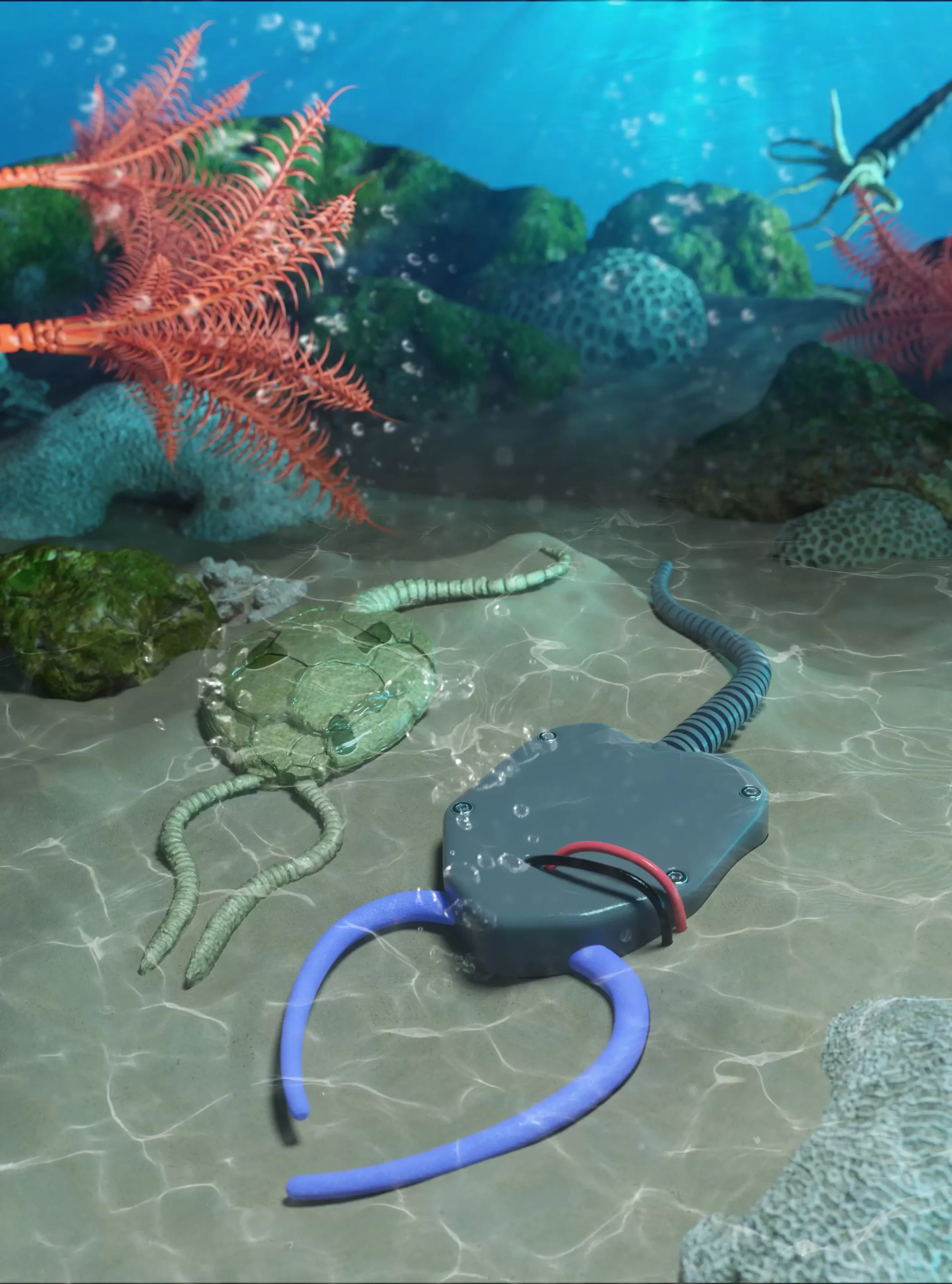Soft robotics, a field that focuses on creating robots using flexible materials, offers unique advantages in terms of flexibility and safety in human interactions. These soft robots have a wide range of applications, from medical devices to enhancing efficiency in various tasks. Moreover, they have the potential to revolutionize exploration in environments such as the ocean and space. To delve deeper into understanding locomotion, Richard Desatnik, along with his colleagues at Carnegie Mellon University, turns to the past and seeks inspiration from ancient creatures.
Desatnik, working in the labs of Philip LeDuc and Carmel Majidi, collaborated with paleontologists from Europe to uncover the secrets of ancient animals for soft robot design. Their focus was on pleurocystitids, sea creatures that thrived around 500 million years ago. Desatnik presented their groundbreaking findings at the 68th Biophysical Society Annual Meeting in Philadelphia, Pennsylvania.
Desatnik emphasizes that while modern creatures have offered valuable lessons, they represent only a fraction of the animals that have existed throughout the history of our planet. By studying ancient creatures, researchers aim to uncover hidden knowledge from the other 99% of species that once roamed the Earth. Many of these animals experienced immense success for millions of years, and their extinction was often unrelated to biological shortcomings. Instead, it may have been due to massive environmental changes or extinction events.
Desatnik and his colleagues began their journey by studying fossils of pleurocystitids, which shared characteristics with present-day sea stars and sea urchins but possessed a unique muscular stem or tail for movement. CT scans provided insights into the creature’s three-dimensional structure. Computer simulations were then employed to predict how the pleurocystitids might have propelled itself through water. Based on this data, the team constructed a soft robot that closely mimicked the prehistoric creature.
The soft robot replicated the sweeping motion of the pleurocystitids’ stem, suggesting that this motion enabled the animal to glide along the ocean floor. In addition, the researchers discovered that the development of a longer stem over generations, as indicated by the fossil record, could have resulted in increased speed without significantly elevating energy requirements. These underwater soft robots have potential applications in geologic surveying and repairing underwater machinery.
Desatnik and his team coined the term “paleobionics” to describe their approach of using extinct creatures as inspiration for soft robotic design. This innovative approach has the potential to not only advance soft robotics but also deepen our understanding of evolution, biomechanics, and the intricate movements of soft robots.
By studying ancient creatures, researchers like Desatnik are unlocking a treasure trove of information that can shape the future of soft robotics. The flexibility and safety of soft robots, combined with insights from extinct animals, offer a world of possibilities in various fields. Whether it’s medical advancements, exploring uncharted territories in the ocean and space, or tackling underwater challenges, soft robotics holds immense promise. As technology advances and researchers continue to unearth lessons from the past, we can look forward to a future where soft robots contribute to enhancing efficiency, safety, and our understanding of the natural world.


Leave a Reply